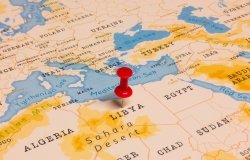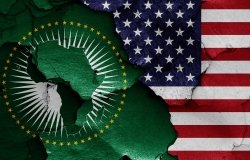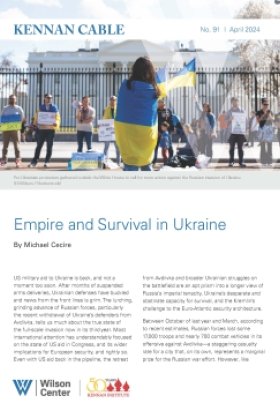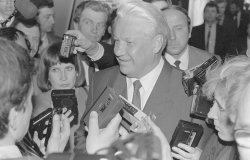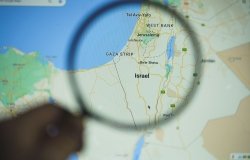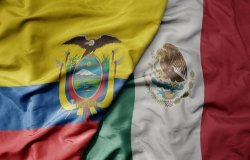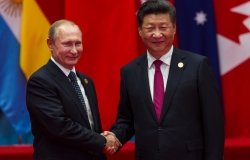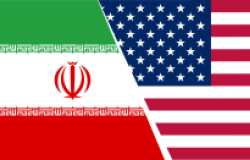The Ahrar al Sham Movement: Syria’s Local Salafists

By Ali El Yassir
 Ahrar al Sham (or, “the Free Men of Syria”) is a Salafist movement that emerged in January 2012 and has since become an important political and military force in Syria’s civil war. Its goal is to overthrow the regime of President Bashar al Assad and replace it with an Islamic State. By mid-2016, Ahrar al Sham had grown from a small network of rebel groups to a complex insurgency with a wide range of activities and functions, which include carrying out social services and providing humanitarian aid.
Ahrar al Sham (or, “the Free Men of Syria”) is a Salafist movement that emerged in January 2012 and has since become an important political and military force in Syria’s civil war. Its goal is to overthrow the regime of President Bashar al Assad and replace it with an Islamic State. By mid-2016, Ahrar al Sham had grown from a small network of rebel groups to a complex insurgency with a wide range of activities and functions, which include carrying out social services and providing humanitarian aid.
Its founders were prisoners released in the second half of 2011 from a wing of Seydnaya prison that held many Islamists. Most had been held for their involvement in the Islamist insurgency against the U.S.-led coalition in Iraq. Following their release, they formed armed groups in the villages and towns of their origins by reactivating old Islamist networks. The individual militias banded together under the Ahrar al Sham umbrella in 2012, although the movement has periodically faced deep internal divisions that threatened formal splits.
Leadership
The co-founder and original leader of Ahrar al Sham was Hassan Abboud, whose nom de guerre was Abu Abdallah al Hamawi. In September 2014, Abboud was killed, along with 14 other first- and second-tier officials, in an explosion during a secret meeting in the Ram Hamdan area of northern Idlib governorate. The cause of the explosion remains unexplained; speculation ranged from a rival group to an accident in an adjoining ammunition cache.
The elimination of senior leaders did not cause a major disruption to the group’s cohesion or activities, as initially expected. Demonstrating a high level of institutionalization, the movement’s ruling Shura Council quickly appointed Hashem al Sheikh, alias Abu Jaber al Maskani, as the new leader. He was briefly succeeded, in September 2015, by Mohannad al Masri, alias Abu Yahya al Hamawi or Abu Yahya al Ghab.
In November 2016, the Shura Council elected Ali al Omar, alias Aby Ammar, as the fourth leader of the group. He came from Syria’s northern Idlib governorate, the movement’s stronghold. Al Omar has been deputy leader under al Masri before replacing him. He had fought with jihadi groups in Iraq and Yemen. With the start of the Syrian conflict, he returned to join ‘Suqour al Sham’ in Syria, a group that eventually merged with Ahrar al Sham in March 2015.
Ideology and Objectives
Ahrar al Sham was founded on a Salafist ideological framework. Its long term goal is to build “a civilized Islamic Society in Syria” based on Sharia law. The group has repeatedly rejected the idea of an inclusive secular democracy, but it has attempted to reconcile political freedom with Sharia law as the basis for governance. In other words, it appears to favor election of officials under an Islamic Constitution, somewhat like Iran’s Islamic Republic. Hassan Abboud, the group’s first leader, said in an interview that an Islamic State “doesn’t mean that [we] want an authoritarian, dictatorial regime, which deprives people of their rights, rather, [we] want a regime built on consultation (Shura) and the participation of the nation (Umma) where it can play its role in supervising the ruler.”
The movement unambiguously espoused a Salafi and Jihadi discourse when it was created, but it has also sought to differentiate itself from al Qaeda and ISIS’s Salafi-Jihadism. The group continued to describe itself as independent and stated that it was not an extension of any organization, party or group. Unlike al Qaeda and ISIS, Ahrar al Sham consistently stated its fight was limited to Syria.
Beginning in mid-2014, the group took a number of pragmatic political steps that included signing the Revolutionary Covenant, an initiative by Syria’s Islamist groups. The Covenant’s goals and principles were nationalist in tone. The Covenant did not call for an Islamic State and instead sought to establish “a state of justice, law, and freedom.” It also included commitments to limit the conflict within Syrian territory; rely on Syrian elements only; and preserve Syria’s territorial integrity. The movement sent out conflicting signals, however, because its core ideology remained Salafist.
Ahrar al Sham went further. In September 2014, the group’s Sharia chief, a cleric named Abu Yazan, criticized the purist ideas of Salafi-Jihadism advocated by al Qaeda and ISIS. In a letter posted online, he actually apologized to the Syrian people for his earlier allegiance. “Yes, I was Salafi-jihadist, and I was imprisoned in the regime’s jails for it. Today, I ask for God’s forgiveness and repent to Him,” he wrote. “I apologize to our people for involving them in Quixotic battles of which they have no need.” Abboud had also earlier criticized some of the Salafi-Jihadi concepts that are shared by al Qaeda and ISIS.
Labib al Nahhas, head of Ahrar al-Sham’s foreign political relations, wrote in 2014 that “We believe in striking a balance that respects the legitimate aspirations of the majority as well as protects minority communities and enables them to play a real and positive role in Syria’s future.” He added that “We believe in a moderate future for Syria that preserves the state and institutes reforms that benefit all Syrians.”
In May 2016, deputy leader Ali Omar said that Ahrar al Sham was distinct from al Qaeda and ISIS. It represented a new movement that respected the approaches and tools of its Islamist predecessors for the common goal of establishing an Islamic State, but charted its own course. “We don’t think that most of the issues currently being floated politically can be implemented – they’re unrealistic, distant from the requirements of the Muslims who rose up in Syria and whose blood was shed, and distant from our own requirements and our ceiling,” he said in a video-taped lecture.
“Ahrar al Sham thinks all the means that God on High sanctioned for the defense of Muslims and securing their rights ought to be employed, but according to priorities, and the nature of the conflict and the battle. As I said before, I can’t say, ‘Come on, let’s remove [Syrian President] Bashar al-Assad politically.’ It can’t be done. So that’s why what’s come to the fore now is the sound of the bullet – jihad on the path of God.”
Territory
Since 2012, Ahrar al Sham has been at the forefront of major rebel campaigns against government forces in the northern provinces of Idlib and Aleppo and in the eastern province of Raqqa. It is particularly associated with two symbolic victories. In March 2013, Ahrar al Sham led an offensive--with Jabhat Fateh al Sham (formerly the Nusra Front) and two other Islamist groups--that resulted in the seizure of the provincial capital of Raqqa from government troops. In March 2015, Ahrar al Sham captured Idlib and several other cities in the province, in an operation with the Nusra Front and other Islamist groups that were all under the umbrella of Jaysh al Fateh (Army of Conquest). It was a huge rebel victory that threatened the regime’s control of its coastal strongholds and prompted Russia to intervene in support of Damascus.
By 2016, Ahrar al Sham was firmly rooted in Idlib governorate and parts of Aleppo province, as well as smaller territory in the south. The group was estimated to have some 10,000 fighters, which made it one of the larger armed opposition groups in Syria. The group relied heavily on Syrians to fill its ranks.
Factional Differences
Following the death of the founding leadership in September 2014, the center of authority shifted to the group’s Shura council. This new power-sharing provided continuity and an agility in generating new leadership, as needed. Over time, Ahrar al Sham merged with various groups, absorbing individuals with divergent backgrounds, views, and interests. Between 2013 and 2015, Ahrar al Sham absorbed at least eight other groups to increase its military capabilities and geographic reach. Its best known merger was with Suqour al Sham, in March 2015, on the eve of their joint offensive on Idlib.
The diversity helped the group with a wide spectrum of actors representing different ideological trends. But it also led to factional differences in decision-making. The internal divisions occasionally produced conflicting policies and incoherent messages. Hardliners increasingly dominated the military wing and the Sharia office, while the more pragmatic faction controlled the political office.
As of late 2016, tensions were rising between these two currents, threatening the breakup of the group. In November, eight members of the Shura Council suspended their membership. In December, 16 brigades associated with hardliners announced the creation of a sub-faction, which was called Jaysh al-Ahrar (or The Army of the Free). These moves, which were intended to voice dissent, endangered an outright split.
Relationship with other groups
Ahrar al Sham has built relationships with a wide array of opposition forces. It has cooperated tactically on the battlefield with the U.S.-backed Free Syrian Army (FSA). But it has also fought alongside the Jabhat Fateh al Sham, which has strong links to al Qaeda.
The group has been the main driver behind building loose coalitions among Islamist rebels. It co-founded the Syrian Islamist Front (SIF) in December 2012 and the Islamic Front (IF) in November 2013. The SIF was replaced by the larger IF.
These coalitions transcended tactical military cooperation; they also agreed on a common ideological and political program. These coalitions were part of Ahrar al Sham’s strategy to expand its influence over smaller groups.
Relationship with al Qaeda and Jabhat Fateh al Sham
Ahrar al Sham has coordinated tactically with Jabhat Fateh al Sham – formerly an affiliate of al Qaeda – on the battlefield, even though it has ideological differences with al Qaeda. Since May 2013, its leaders have criticized Jabhat Fateh al Sham over its al Qaeda affiliation. In a statement, Ahrar al Sham warned that the group’s pledge of allegiance to al Qaeda leader Ayman al Zawahiri was not in the interest of the Syrian revolution and could invite outside intervention.
A major source of tension between Ahrar al Sham and Jabhat Fateh al Sham was over the Revolutionary Covenant. Ahrar al Sham signed it; Jabhat Fateh al Sham rejected it. However, these disagreements did not get in the way of their tactical and operational cooperation on the battlefield. There is also at least one leader of Ahrar al Sham—Abu Khaled al Suri, a storied jihadi who fought in Afghanistan in the 1980s—who was al Qaeda’s representative in Syria. He was killed in 2014.
By late 2016, Ahrar al Sham’s membership was divided over whether to merge Jabhat Fateh al Sham – the al Qaeda branch in Syria once known as the Nusra Front. A break-up – over this issue as well as the scope of ties with Turkey – would seriously weaken the group, which had been a cornerstone among disparate Islamist rebel groups.
Relationship with Nationalist Opposition
Ahrar al Sham initially refused to join the Free Syrian Army and other nationalist military councils. It also rejected the Syrian National Coalition’s (SNC) rights to represent the entire Syrian opposition. But Ahrar al Sham has often participated in operations alongside FSA militias. In August 2014, it joined the Western-backed Revolutionary Command Council, which tried to replace the failed institutions of the FSA.
Regional and International Relations
Ahrar al Sham has strong relationships with Turkey and Qatar. It has reportedly received weapons and political support from Turkey throughout the conflict. Turkey has also allowed the group access to the county for meetings of its political bureau, giving Turkey considerable influence over the group. Qatar has also supported it financially and politically, in line with its broader support of Islamists. Throughout the conflict, al Jazeera news network provided Ahrar al Sham and its leaders special media coverage, raising the group’s public profile.
Russia and the Syrian regime have demanded that Ahrar al Sham be designated in the list of terrorist groups to be excluded from international peace negotiations. The United States has not listed the group as a terrorist organization, despite its concerns over the movement ties with Jabhat Fateh al Sham.
Ahrar al Sham has promoted itself as an Islamist alternative to Jabhat Fateh al Sham and ISIS. In July 2015, the head of Ahrar al Sham’s foreign relations, Labib Nahhas, published two op-eds in the Washington Post and the Daily Telegraph to win Western support. “We are fighting for justice for the Syrian people. Yet we have been falsely accused of having organizational links to al Qaeda and of espousing al Qaeda’s ideology. Nothing could be further from the truth,” Nahhas wrote. “We believe that Syria needs a national unifying project that cannot be controlled or delivered by a single party or group and should not be bound to a single ideology.” Its attempt to open a dialogue with major Western powers, particularly the United States, has so far failed.
Photo credits: Ahrar al Sham logo by MrPenguin20 via Wikimedia Commons [CC BY-SA 4.0]
Related Program

The Islamists
Learn more about Hamas and how it relates to similarly aligned organizations throughout the region. Read more

